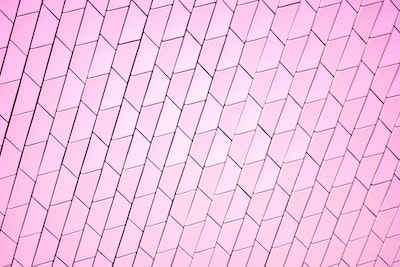As our cities continue to grow and space becomes a precious commodity, architects and interior designers are constantly seeking innovative solutions to create functional living and working environments. One such design trend that has gained tremendous popularity in recent years is open-plan layouts.
Gone are the days of boxed rooms and barriers, as homeowners and office managers embrace the idea of interconnected spaces that promote collaboration and connectivity. Amidst this revolution, the concept of glass ceiling design has emerged as a transformative element.
By seamlessly integrating structural glass roofs into open-plan designs, architects are breaking barriers and redefining the boundaries of modern architecture. The glass ceiling design, oftentimes seen as an aesthetic marvel, serves a dual purpose by flooding spaces with natural light while simultaneously accentuating the feeling of expansiveness.
But why are these structural glass roofs essential for open-plan designs? Let’s delve deeper into the intricacies of this architectural phenomenon and explore its manifold benefits.
Table of Contents
The Magic of Structural Glass Roofs
These modern architectural wonders are like the Harry Potter of open-plan designs, adding a touch of magic to any area. The true enchantment lies in their ability to seamlessly merge indoor and outdoor spaces, flooding the area with natural light and creating a sense of expansiveness.
But the benefits of structural glass roofs go beyond just their aesthetics. They also provide excellent insulation, ensuring year-round comfort, and offer superb soundproofing properties.
Additionally, their durability and resistance to UV rays make them a long-lasting and easy-to-maintain choice. So, whether you’re designing a home, office, or commercial space, consider the beauty and advantages of a glass roof.
Enhancing Natural Light and Visual Appeal
They captivate architects and homeowners with their sleek and transparent beauty. These architectural wonders not only enhance natural light and visual appeal but also transform spaces in a thought-provoking way.
Glass roofs seamlessly connect interior and exterior spaces, bridging the gap between nature and the built environment. When sunlight floods in, they create a mesmerizing interplay of light and shadows, evoking enchantment and awe.
The integration of natural light not only improves the overall aesthetic but also offers practical benefits such as energy efficiency and improved mood. Whether in homes or commercial spaces, structural glass roofs are revolutionizing design trends and inviting occupants to experience spaces like never before.
As humanity embraces the magic of structural glass roofs, the future of open-plan design looks especially bright.
Creating Seamless Open-Plan Spaces
When it comes to designing open-plan spaces, one of the most captivating trends in recent years has been the use of structural glass roofs. These transparent marvels not only bring in an abundance of natural light, but they also create a sense of being outdoors, even when you’re inside.
It’s no wonder that many architects and homeowners have fallen in love with this concept, as it encourages a seamless flow between the interior and exterior, making spaces feel larger and more connected. Glass roofs have also become synonymous with sustainable architecture, as they reduce the need for artificial lighting and heating during the day.
According to a study conducted by the American Society of Interior Designers (ASID), natural light has been linked to increased productivity, improved mood, and reduced energy consumption. As Sarah Cole, Chief Executive of the ASID, states, ‘Research shows that properly designed spaces with lots of natural light can have a positive impact on occupants’ well-being and overall satisfaction.’ Whether you’re renovating your home or designing a new space, incorporating a glass roof can truly transform the way you experience open-plan living.
So, if you’re looking to create a bright, airy, and sustainable space, consider joining the structural glass roof revolution and let the magic unfold. [source]
Durability and Safety: Glass Roofs Unveiled
They bring an ethereal quality to open-concept spaces, reminiscent of Harry Potter’s invisibility cloak. However, durability and safety are essential considerations.
Understanding the materials and construction techniques involved is crucial to ensure the longevity of glass roofs. In this section, we will explore the hidden intricacies of these structures, including their robustness against the elements, the technology behind their structural integrity, and the safety measures in place.
Architects and builders are constantly pushing the boundaries of what glass roofs can achieve, using tempered glass panels for strength and resilience, as well as embedded sensors to detect potential weaknesses. Join us in the captivating world of glass roofs and discover how they are reshaping modern living space design.
Unlocking the Design Potential: From Homes to Commercial Spaces
These glass roofs are more than just regular ceilings – they have the ability to create a magical and transformative space. The sleek and modern design of these roofs allows natural light to flood into a room, making it feel larger and more connected to the outdoors.
In addition to their aesthetic appeal, these roofs also offer functional benefits. They provide better ventilation, reduce energy costs, and improve the overall well-being of occupants by increasing exposure to natural light.
Whether it’s a cozy living room or a busy office, embracing the design potential of transparent roofing solutions can create a functional and inspiring space. Don’t settle for a standard ceiling when you can have the enchantment of an open-plan design.
The Importance of Structural Glass Roofs in Open-Plan Living
Open-plan designs have gained immense popularity in modern architectural trends, offering an abundance of space and creating a seamless flow of natural light. Yet, even in this era of expansive designs, the need for privacy and sectioned areas persists.
This is where structural glass roofs play a crucial role. Glassspace, a leading provider of glass extensions in London, understands the significance of these roofs in creating harmonious open-plan spaces.
Their frameless structural glass installations seamlessly blend with contemporary designs, allowing natural light to flood in while maintaining a sense of privacy and individuality. Moreover, their use of solar-controlled glass ensures an optimal indoor environment all year round, ensuring an escape from the scorching heat of summer and the biting chill of winter.
Glassspace not only embraces innovation but also prioritizes the comfort and practicality necessary for successful open-plan living.
Frequently Asked Questions
Structural glass roofs are roofing structures that are primarily made up of glass panels. These panels are supported by various structural elements, such as beams or frames, to provide a sturdy and transparent overhead covering.
Structural glass roofs are often likened to the Harry Potter series because they have the ability to magically transform a space. Just as the Room of Requirement in Hogwarts can change its form to suit any purpose, structural glass roofs can instantly create an airy and open atmosphere, bringing natural light into the space and connecting it with the outdoors.
There are several advantages of using structural glass roofs in open-plan designs. These include: 1) Maximizing natural light: Glass roofs allow ample sunlight to filter into the space, reducing reliance on artificial lighting. 2) Creating a sense of spaciousness: The transparent nature of glass roofs visually expands the space, making it feel larger and more connected. 3) Enhancing aesthetics: Glass roofs add a sleek and modern touch to open-plan designs, creating a beautiful and visually appealing environment.
Yes, structural glass roofs are safe when designed and installed properly. They are engineered to meet safety standards and can withstand various weather conditions. Additionally, modern glass technologies ensure high strength and durability, making structural glass roofs a secure choice for open-plan designs.
While structural glass roofs offer many benefits, there are a few limitations and considerations to keep in mind. These include: 1) Heat and glare management: The transparency of glass roofs can result in excessive heat and glare, requiring additional shading or tinting solutions. 2) Maintenance: Glass surfaces may require regular cleaning to maintain their clarity and appearance. 3) Cost: Structural glass roofs can be more expensive to install compared to traditional roofing materials. It is important to consider the budget and long-term investment when opting for this design element.
Structural glass roofs can be used in a wide range of buildings, including residential, commercial, and public spaces. They offer versatility in design and can be customized to suit different architectural styles and requirements.
Overview
Structural glass roofs have become an indispensable element in open-plan designs, adding a touch of brilliance and ethereal beauty. Made of tempered glass, these roofs allow an abundance of natural light to flood into the space, creating a seamless connection with the outside world.
The transparency of the glass not only offers a sense of freedom and openness, but also enhances the aesthetic appeal of the architecture. These roofs provide a unique architectural solution, breaking free from the constraints of conventional roofs and introducing a new era of design possibilities.
With their ability to blur the boundary between inside and outside, they bring nature indoors, transforming any space into a sanctuary of tranquility. The structural integrity of these roofs is remarkable, enabling architects to create vast, open spaces without the need for numerous supporting columns.
This allows for uninterrupted views, promoting a sense of unity and flow. Moreover, the versatility of structural glass roofs allows them to adapt to different architectural styles, from modern and minimalist to traditional and intricate.
With their ability to withstand extreme weather conditions, these roofs provide durability and safety. The use of laminated glass ensures that even in the unlikely event of breakage, fragments do not scatter, reducing the risk of injury.
Additionally, the energy efficiency of structural glass roofs cannot be overlooked. The ample natural light reduces the need for artificial lighting during the day, leading to significant energy savings.
By creating a more sustainable and eco-friendly environment, these roofs contribute to the overall well-being of occupants. In conclusion, structural glass roofs have evolved into an essential feature of open-plan designs, revolutionizing the way we perceive space and inviting us to experience the beauty and serenity of nature from the comfort of our own homes.





